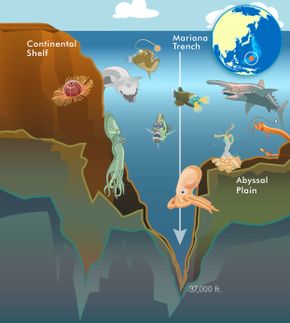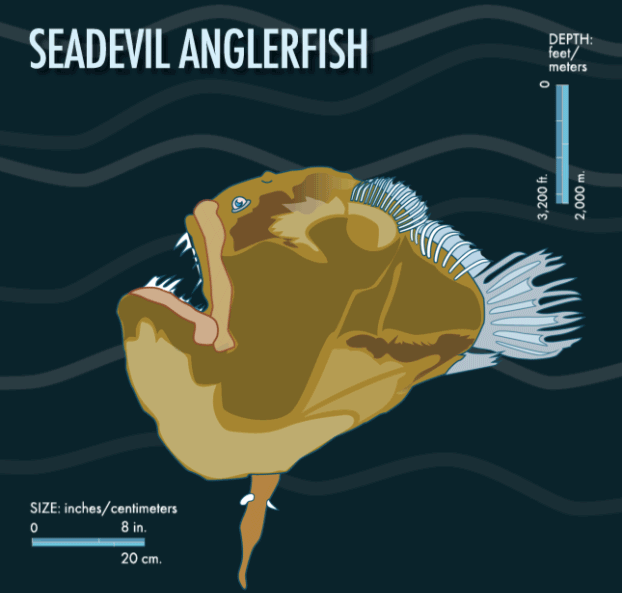It's a geological feature so massive, so vast and so imposing that it makes Mount Everest look like a mole hill by comparison. Unlike Everest, though, it's nearly invisible and will be forever unseen by the unaided human eye. It's the Mariana Trench, an underwater gash in Earth's crust that's five times longer than the Grand Canyon and much, much deeper.
In fact, the Mariana Trench is the deepest part anywhere in the Earth's oceans. Estimates vary a little, but at its blackest depths, a crease called the Challenger Deep, this abyss is close to 36,037 feet (10,984 meters), or about 6.8 miles (10.9 kilometers) deep. If you inverted Everest and plunged it into the Mariana, it highest craggy peak would fall short of the bottom by more than 7,000 feet (2,134 meters).
Advertisement
The trench forms where two tectonic plates (jigsaw-puzzle-shaped pieces of Earth's crust) crunch into each other. As the plates collide in slow motion, the edges push downward into a V shape, creating a valley that has no equal on our planet.
It's a place so foreign that until recent decades, scientists had almost no clue as to what — if any — sort of lifeforms might be hovering there. If you plunge deeper than 3,280 feet (1,000 meters) into the ocean, there's no sunlight to spawn life. Water temperatures often settle in at just above freezing. And food isn't particularly plentiful.
The water pressure in the trench is nearly 1,000 times greater than at sea level. The pressure is so high that it will crush nearly any creature (or manmade object), unless that animal or vessel is built specifically to withstand those extremes. This particular area of the sea, then, is more than a little inhospitable. But these expanses are not lifeless.
A few manned and unmanned vehicles have parted the waters of the trench in recent years, proving that there are indeed organisms living and even thriving in this nearly alien environment. Fittingly, some of these critters are wonderfully strange.
Let's shine a dim ray of sunshine through this watery, mysterious underworld and peek at a few of the most bizarre living things on the planet. But these species aren't just weird; they're also some of toughest animals around.










